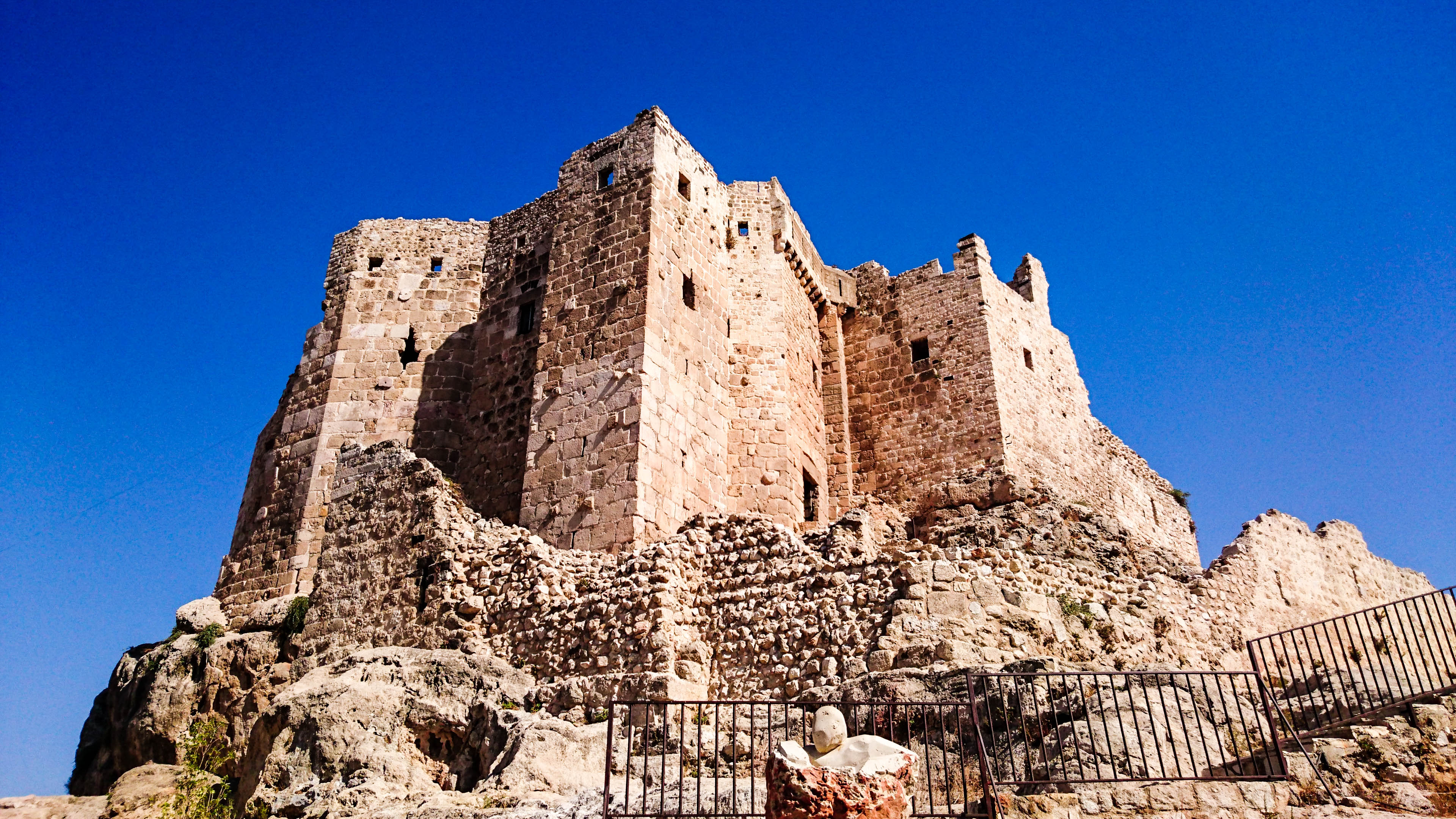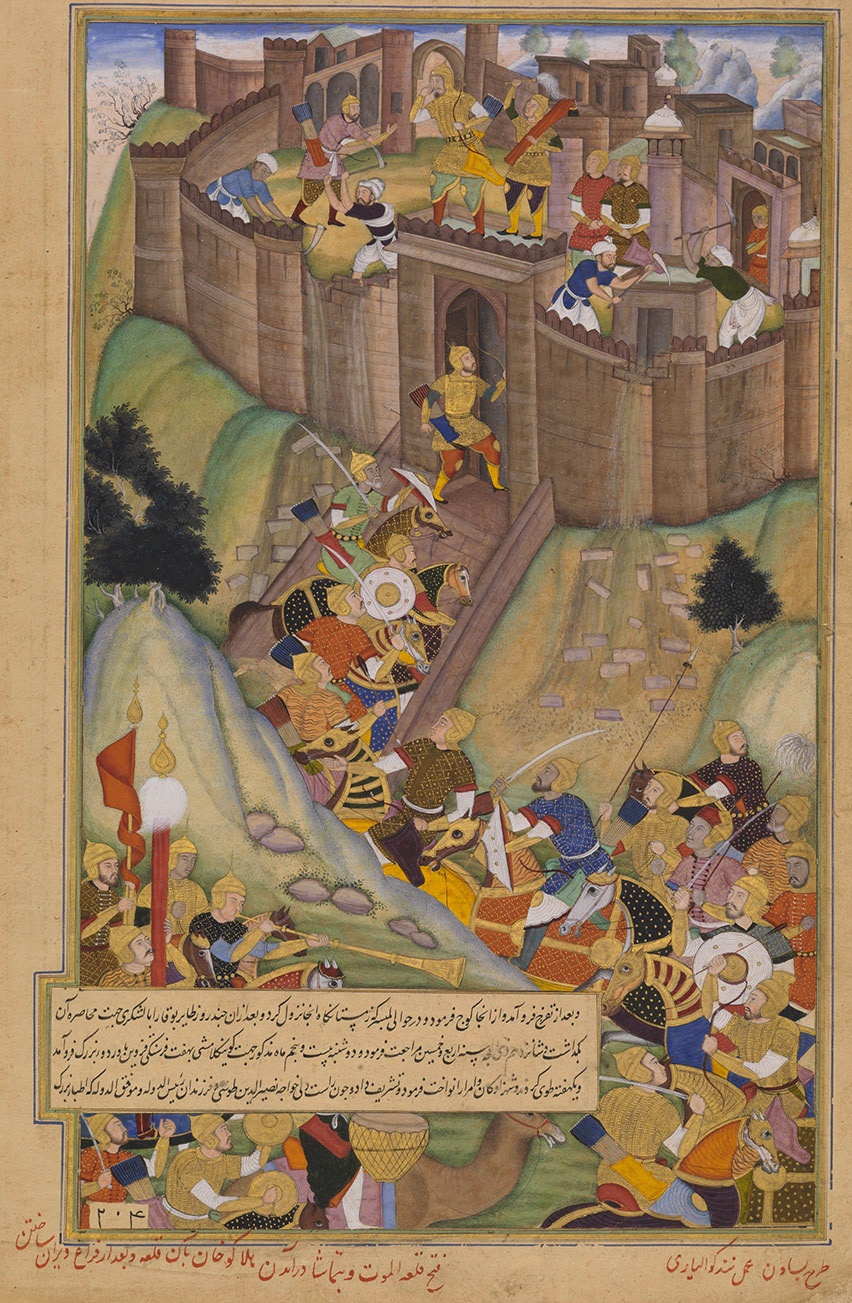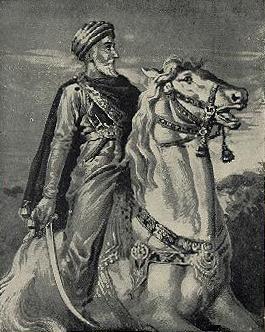|
Hashishin
The Order of Assassins (; ) were a Nizari Isma'ili order that existed between 1090 and 1275 AD, founded by Hasan al-Sabbah. During that time, they lived in the mountains of Persia and the Levant, and held a strict subterfuge policy throughout the Middle East, posing a substantial strategic threat to Fatimid, Abbasid, and Seljuk authority, and killing several Christian leaders. Over the course of nearly 200 years, they killed hundreds who were considered enemies of the Nizari Isma'ili state. The modern term assassination is believed to stem from the tactics used by the Assassins. Contemporaneous historians include ibn al-Qalanisi, Ali ibn al-Athir, and Ata-Malik Juvayni. The former two referred to the Assassins as ''batiniyya'', an epithet widely accepted by Isma'ilis themselves. Overview The Assassins were founded by Hassan-i Sabbah. The state was formed in 1090 after the capture of Alamut Castle in the Alborz mountain range of Persia, which served as the Assassins' headqu ... [...More Info...] [...Related Items...] OR: [Wikipedia] [Google] [Baidu] |
Nizari Isma'ilism
Nizari Isma'ilism () are the largest segment of the Ismailis, who are the second-largest branch of Shia Islam after the Twelvers. Nizari teachings emphasise independent reasoning or '' ijtihad''; pluralism—the acceptance of racial, ethnic, cultural and inter-religious differences; and social justice. Nizaris, along with Twelvers, adhere to the Jaʽfari school of jurisprudence. The Aga Khan, currently Aga Khan V, is the spiritual leader and Imam of the Nizaris. The global seat of the Ismaili Imamate is in Lisbon, Portugal. Early history Nizari Isma'ili history is often traced through the unbroken hereditary chain of guardianship, or '' walayah'', beginning with Ali Ibn Abi Talib, whom Shias believe the prophet Muhammad declared his successor as Imam during the latter's final pilgrimage to Mecca, and continued in an unbroken chain to the most recent Imam, Shah Rahim Al-Husayni, the Aga Khan. Fatimid usurpation, schism, and the flight of the Nizari From early in his ... [...More Info...] [...Related Items...] OR: [Wikipedia] [Google] [Baidu] |
Alamut Castle
Alamut (, meaning "eagle's nest") is a ruined mountain fortress located in the Alamut region in the South Caspian Sea, Caspian, near the village of Gazor Khan in Qazvin Province in Iran, approximately 200 km (130 mi) from present-day Tehran. In 1090 AD, the Alamut Castle, a mountain fortress in present-day Iran, came into the possession of Hassan-i Sabbah, a champion of the Nizari Isma'ilism, Nizari Ismaili cause. Until 1256, Alamut functioned as the headquarters of the Nizari Ismaili state, which included a series of List of Ismaili strongholds, strategic strongholds scattered throughout Persia and Syria, with each stronghold being surrounded by swathes of hostile territory. Alamut, which is the most famous of these strongholds, was thought impregnable to any military attack and was fabled for its heavenly gardens, library, and laboratories where philosophers, scientists, and theologians could debate in intellectual freedom. The stronghold survived adversaries includin ... [...More Info...] [...Related Items...] OR: [Wikipedia] [Google] [Baidu] |
Christian
A Christian () is a person who follows or adheres to Christianity, a Monotheism, monotheistic Abrahamic religion based on the life and teachings of Jesus in Christianity, Jesus Christ. Christians form the largest religious community in the world. The words ''Christ (title), Christ'' and ''Christian'' derive from the Koine Greek title (), a translation of the Biblical Hebrew term ''mashiach'' () (usually rendered as ''messiah'' in English). While there are diverse interpretations of Christianity which sometimes conflict, they are united in believing that Jesus has a unique significance. The term ''Christian'' used as an adjective is descriptive of anything associated with Christianity or Christian churches, or in a proverbial sense "all that is noble, and good, and Christ-like." According to a 2011 Pew Research Center survey, there were 2.3 billion Christians around the world, up from about 600 million in 1910. Today, about 37% of all Christians live in the Americas, about 26% ... [...More Info...] [...Related Items...] OR: [Wikipedia] [Google] [Baidu] |
Al-Kahf Castle
Al-Kahf Castle or the Castle of the Cave () is a medieval Nizari Isma'ili castle located around southeast of Margat, in the al-Ansariyah mountains in northwest Syria. History The castle was built around 1120 by Saif al-Mulk ibn Amrun, and was sold to the Isma'ilis 1138 by his son Musa. It served as the base of the Chief Da'i of Syria Abu Muhammad. Rashid ad-Din Sinan, the Arab leader of the Isma'ili sect in Syria, used this castle initially as his base and hermitage. Sinan eventually died and was buried there in 1193. In 1197 the Regent of Jerusalem, Henry II, Count of Champagne, visited the castle to secure an alliance with Sinan's successor. The castle was the last Isma'ili stronghold in Syria to surrender to the Mamluks. Sultan Baibars finally captured it in 1273, and it remained in use until Ottoman times, when it served at times as a prison for important personages. The castle was finally destroyed in 1816 by Mustafa Agha Barbar, the Ottoman governor of Tripoli. Over ... [...More Info...] [...Related Items...] OR: [Wikipedia] [Google] [Baidu] |
Al-Qadmus
Al-Qadmus (, also spelled al-Qadmous or Cadmus) is a town in northwestern Syria, administratively part of the Tartus Governorate, located northeast of Tartus and southeast of Baniyas. Nearby localities include Kaff al-Jaa and Masyaf to the east, Wadi al-'Uyun and al-Shaykh Badr to the south, Hammam Wasel, al-Qamsiyah and Maten al-Sahel to the southwest, Taanita to the west, al-Annazeh to the northwest and Deir Mama to the northeast. It is situated just east of the Mediterranean coast and its ruined castle stands on a plateau roughly above sea level and just above the town. According to the Syria Central Bureau of Statistics, al-Qadmus had a population of 5,551 in the 2004 census. It is the administrative center of the al-Qadmus ''nahiyah'' ("sub-district") which contained 25 localities with a collective population of 22,370 in 2004. [...More Info...] [...Related Items...] OR: [Wikipedia] [Google] [Baidu] |
Abu Qubays, Syria
Abu Qubays ( also spelled ''Abu Qobeis'', ''Abu Qubais'' or ''Bu Kubais''; also known as Qartal) is a former medieval castle and currently an inhabited village in northwestern Syria, administratively part of the Hama Governorate, located northwest of Hama. It is situated in the al-Ghab plain, west of the Orontes River. Nearby localities include Daliyah 21 kilometers to the west, al-Laqbah to the south, Deir Shamil to the southeast, Tell Salhab to the northeast and Nahr al-Bared, Syria, Nahr al-Bared further northeast. According to the Central Bureau of Statistics (Syria), Syria Central Bureau of Statistics (CBS), Abu Qubays had a population of 758 in the 2004 census.General Census of Population and Housing 2004 Central Bureau of Statistic ... [...More Info...] [...Related Items...] OR: [Wikipedia] [Google] [Baidu] |
List Of Ismaili Castles
List of the strongholds or dar al-hijra of the Order of Assassins in Persia (Iran) and Syria. Most of the Persian Ismaili castles were in the Alborz mountains, in the regions of Daylaman (particularly, in Alamut and Rudbar; north of modern-day Qazvin) and Quhistan (south of Khurasan), as well as in Qumis. Most of the Syrian Ismaili castles were in Jabal Bahra' (Syrian Coastal Mountain Range). According to Juzjani, before the Mongol invasion the Assassins possessed 70 forts in Quhistan and 35 in Alamut. Overall, they probably had 250 castles. The Ismaili fortresses in Rudbar of Alamut had been built on rocky heights and were equipped to withstand long sieges; they had storehouses with high capacities and elaborate water supply infrastructure such as cisterns, qanats, and canals.B. Hourcade, “ALAMŪT,” Encyclopædia Iranica, I/8, pp. 797-801; an updated version is available online at http://www.iranicaonline.org/articles/alamut-valley-alborz-northeast-of-qazvin- (access ... [...More Info...] [...Related Items...] OR: [Wikipedia] [Google] [Baidu] |
Lambsar Castle
Lambsar (, also pronounced Lamsar), Lamasar, Lambasar, Lambesar () or Lomasar () was probably the largest and the most fortified of the Ismaili castles. The fortress is located in the central Alborz mountains, south of the Caspian Sea, about 120 km from present-day Tehran, Iran. Lambsar is to the northeast of Razmian village (the central district of Rudbar e Shahrestan). Kiya Buzurg Ummid (died 1138) captured the castle from Rasamuj and rebuilt it into a major stronghold using local labour. He was appointed by Hassan-i Sabbah (died 1124) as its governor. Only ruins remain of this magnificent fortress today. Very deep valleys surrounding the fortress make it impossible to access from the East and West sides. The North and South fronts are the only possible ways to get into the fortress. Although the slope of the mountain with a difference of 150m on both levels is stretched from north to south with a length of 480m, the castle is more than 190m in width. The huge two-layer ... [...More Info...] [...Related Items...] OR: [Wikipedia] [Google] [Baidu] |
Alborz
The Alborz ( ) range, also spelled as Alburz, Elburz or Elborz, is a mountain range in northern Iran that stretches from the border of Azerbaijan along the western and entire southern coast of the Caspian Sea and finally runs northeast and merges into the smaller Aladagh Mountains and borders in the northeast on the parallel mountain ridge Kopet Dag in the northern parts of Khorasan. All these mountains are part of the much larger Alpide belt. The Alborz range is divided into the Western, Central, and Eastern Alborz Mountains. The Western Alborz Range (usually called the Talysh) runs south-southeastward almost along the western coast of the Caspian Sea. The Central Alborz (the Alborz Mountains in the strictest sense) runs from west to east along the entire southern coast of the Caspian Sea, while the Eastern Alborz Range runs in a northeasterly direction, toward the northern parts of the Khorasan region, southeast of the Caspian Sea. Mount Damavand, the highest mountain in I ... [...More Info...] [...Related Items...] OR: [Wikipedia] [Google] [Baidu] |
Hassan-i Sabbah
Hasan al-Sabbah also known as Hasan I of Alamut, was an Iranian religious and military leader, founder of the Nizari Ismai'li sect widely known as the '' Hashshashin'' or the Order of Assassins, as well as the Nizari Ismaili state, ruling from 1090 to 1124 AD.Lewis, Bernard (1967), ''The Assassins: a Radical Sect of Islam'', pp 38-65, Oxford University Press Alongside his role as a formidable leader, Sabbah was an accomplished scholar of mathematics, most notably in geometry, as well as astronomy and philosophy, especially in epistemology. E. G. Brown ''Literary History of Persia'', Vol. 1, p. 201. Nizam al-Mulk Tusi, pg. 420, foot note No. 3 It is narrated that Hasan and the Persian polymath Omar Khayyam were close friends since their student years. He and each of the later Assassin leaders came to be known in the West as the Old Man of the Mountain, a name given to the sect's leader in the writings of Marco Polo that referenced the sect's possession of the commanding mount ... [...More Info...] [...Related Items...] OR: [Wikipedia] [Google] [Baidu] |
Batiniyya
Batiniyya () refers to groups that distinguish between an outer, exoteric ('' zāhir'') and an inner, esoteric ('' bāṭin'') meaning in Islamic scriptures. Ismaili Batiniya The term has been used in particular for an allegoristic type of scriptural interpretation developed among early Ismaili Shia groups, stressing the ''bāṭin'' meaning of texts. It has been retained by all branches of Isma'ilism and various Druze groups as well. The Alawites practice a similar system of interpretation. ''Batiniyya'' is a common epithet used to designate Isma'ili Islam, which has been accepted by Ismai'lis themselves. Sunni writers have used the term ''batiniyya'' polemically in reference to rejection of the evident meaning of scripture in favor of its ''bāṭin'' meaning. Al-Ghazali, a medieval Sunni theologian, used the term ''batiniyya'' pejoratively for the adherents of Isma'ilism. Some Shia writers have also used the term polemically. Sufi Batinya When the Islamic world of the F ... [...More Info...] [...Related Items...] OR: [Wikipedia] [Google] [Baidu] |
Ata-Malik Juvayni
Ata-Malik Juvayni ; 1226 – 5 March 1283) was a bureaucrat and historian from the Juvayni family who served under the Mongol Empire. He is known for composing the ''Tarikh-i Jahangushay'' ("History of the World Conqueror"), an important account on the history of Central Asia and the 13th-century Mongol invasion of Iran. Early life Born in 1226, Ata-Malik belonged to the Persian Juvayni family, whose history of bureaucratic service goes back to the Seljuk era. Both his grandfather and his father, Baha al-Din, had held the post of ''sahib-divan'' or Minister of Finance for Muhammad Jalal al-Din and Ögedei Khan, respectively. Baha al-Din also acted as deputy c. 1246 for his immediate superior, the emir Arghun Aqa, in which role he oversaw a large area, including the Kingdom of Georgia. Career Just like his predecessors, Ata-Malik became an important state official. He visited the Mongol capital of Karakorum twice, beginning his history of the Mongols conquests on one such v ... [...More Info...] [...Related Items...] OR: [Wikipedia] [Google] [Baidu] |





